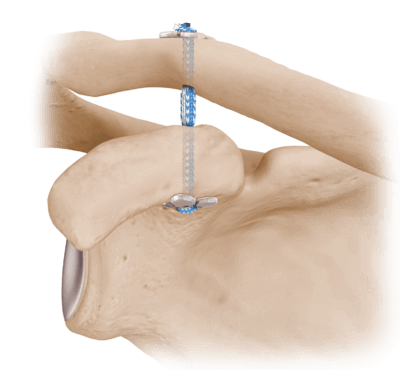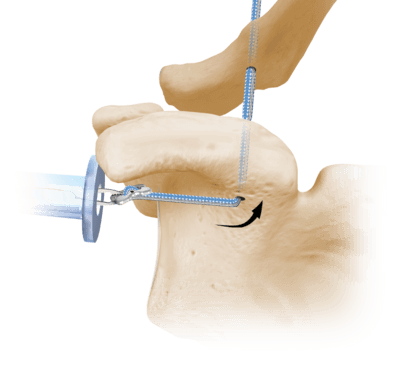.jpg)
For all traumatic or chronic diseases of the musculoskeletal system, the Centrokinetic private clinic in Bucharest is prepared with an integrated Orthopedic Department, which offers all the necessary services to the patient, from diagnosis to complete recovery.
The Department of Orthopedic Surgery of Centrokinetic is dedicated to providing excellent patient care and exceptional education for young physicians in the fields of orthopedic surgery and musculoskeletal medicine.
Centrokinetic attaches great importance to the entire medical act: investigations necessary for correct diagnosis (ultrasound, MRI), surgery, and postoperative recovery.
Discover the open MRI imaging center in our clinic. Centrokinetic has a state-of-the-art MRI machine, dedicated to musculoskeletal conditions, in the upper and lower limbs. The MRI machine is open so that people suffering from claustrophobia can do this investigation. The examination duration is, on average, 20 minutes.
Stage IV, V, VI acromioclavicular lesions have an absolute surgical indication.
However, sometimes a favorable evolution is observed through orthopedic treatments, but only in grade V AC injuries. The surgical indication also depends on the patient's age, sex, type and degree of daily activity, occupation, etc. These patients followed the same treatment and recovery protocol as patients with stage I, II, III AC disjunctions. Favorable results from orthopedic treatment have been observed especially in women, older than 55 years, who have daily activities that do not involve shoulder joints.
In history, many surgical techniques have been described, some addressed directly to the acromioclavicular joint, others have attempted to restore the coracoclavicular ligaments.
.jpg)
The purpose of the surgery is to restore the anatomy of the shoulder and the stability of the acromioclavicular joint. The medical team performs this surgery, combining two different surgical techniques: stabilization of the AC joint with AC TightRope Kit Repair (Arthrex) and restoration of the coracoclavicular ligaments with hamstring autograft (tendon ms. Gracilis).
The anesthesia required for this intervention is AG IOT (general). The intervention begins by positioning the patient in a semi-sitting position in a supine position.
Both the knee on the side with AC disjunction and the affected shoulder are isolated.
The tendon of the gracilis muscle is harvested from the knee through an incision of about 2 cm in the anteromedial part of the knee, through which the insertion of the tendon is discovered, later, all the muscle being harvested through the same incision. The graft has an average length of 20-24 cm and a thickness of 3-4 mm, and the harvest will not affect the shape or shape of the thigh muscles.
Subsequently, an incision of about 5 cm is made in the anterior part of the shoulder, the vertical starting from 2 cm medial of the acromioclavicular joint towards the coracoid process. The clavipectoral fascia and the coracoid process are highlighted and. A thorough dissection around this circumferential process follows. Insert the guide pin and the 4 mm drill through the clavicle and the coracoid process.
 |  |
The disjunction is reduced and the position is maintained, using the AC TightRope system (Arthrex).
.jpg)
The graft is then passed to the shoulder below the coracoid process and through the clavicle, through 2 4 mm tunnels, in the place of native insertion of the ligaments. The fixation of the ligament is done either by 2 anchors in the clavicle or by supraclavicular suture. By restoring the coracoclavicular ligaments, healing can be obtained as close as possible to the normal anatomy of the shoulder, restoring the natural function and mobility of the shoulder joints.
The recovery protocol after surgery is essential for the correct and complete healing of soft tissues and the integration of autograft.
There is a study conducted in 2007 by Dr. Rodeo and collaborators, which tested the period of healing/integration of a muscle-tendon after passing through a bone tunnel. The study was performed on dogs and started to fail at 4-6-8 weeks. The test consisted in applying a traction force on the respective tendon. After 12 weeks, healing is noticed at the bone-tendon interface. Numerous studies have shown similar things.
Immediately after the operation, the patient receives a special orthosis for 6-8 weeks. This immobilization aims to remove stress from the acromio-clavicular joint. We must remember that the AC joint is the only one that connects the chest and the upper limb. The immobilization is continuous, except for the training sessions or showers.
.jpg)
Post surgery
After the intervention, the patient remains hospitalized for 1-2 days. He will receive pain medication and antibiotics during his hospitalization. The operated limb is partially immobilized in a Dessault bandage for a few days.
After the surgery, you will be discharged, with the indications related to the recovery and the subsequent controls. Passive early mobilization of the shoulder joint is necessary for the patient to regain normal mobility. Our medical team guides the patient to physical therapy and physiotherapy under the guidance of a doctor.
The patient must understand that after the surgery he has certain limitations in mobility, he is forbidden to make certain movements.
At home
Although recovery from arthroscopy is much faster than a classic operation, it will still take a few weeks for you to fully recover your shoulder joint. You should expect pain and discomfort for at least a week postoperatively. Ice will reduce pain and inflammation.
You must be careful not to sleep on the operated shoulder in the first weeks because the pain and discomfort can worsen. You can take a bath, but without wetting the bandage and incisions. The threads are suppressed at 14 days postoperatively. Physical therapy plays a very important role in the rehabilitation program, and the exercises must be supervized by a physical therapist until the end of the recovery period.
It is very important to follow the recovery program strictly and seriously for the surgery to be a success. Our medical team works on average with the patient after this intervention, 12-18 weeks until the complete recovery of the shoulder.
Following any surgery, medical recovery plays an essential role in the social, professional, and family reintegration of the patient. Because we pursue the optimal outcome for each patient entering the clinic, recovery medicine from Centrokinetic is based on a team of experienced physicians and physical therapists and standardized medical protocols.
MAKE AN APPOINTMENT
CONTACT US
MAKE AN APPOINTMENT
FOR AN EXAMINATION
See here how you can make an appointment and the location of our clinics.
MAKE AN APPOINTMENT

































































































































